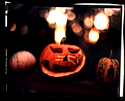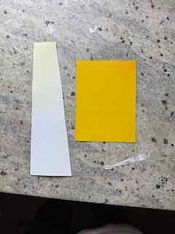Okay, thanks for confirming (and also, welcome to Photrio!)
You could try the following tests:
* Process a test strip without exposing it under the enlarger. Handle it the exact same way as you'd do otherwise (take from pack, put in easel etc.), just skip the actual exposure and instead just leave it on the easel for the approximate amount of time of the hypothetical exposure.
* Process a test sheet by taking it from the pack and putting it straight into the developing bath/tank.
Both of these sheets should come out pure white after processing, washing & drying. If they come out yellow, compare them and try to figure out if one sheet is more yellow than the other (the first may be more yellow).
If both sheets come out yellow, there's a fogging problem. It can still be in your darkroom, it can be of chemical nature or pre-existing fog on the paper.
If there's a difference in the intensity of the fog, with the second sheet being less affected than the first, the fogging is occurring in your darkroom and likely the result of a stray indicator LED etc. somewhere. In this case, you could do some more tests with strips left out for various amounts of time in darkroom conditions to verify that the duration of the exposure to these conditions does in fact affect fog.
If both sheets come out yellow and there's no difference in the intensity, then the fog will either be pre-existing on the paper, or it will be chemically induced. The latter is possible, but I'm struggling to think of a likely scenario since contamination and mixing errors generally do not result in a solid yellow fog, but other hues instead.
If both sheets come out pure white, the likely cause is stray light from the enlarger. However, I find this somewhat unlikely as this typically involves red fog, not yellow. The possible exception is an additive enlarger with a light leak only on the blue channel.









